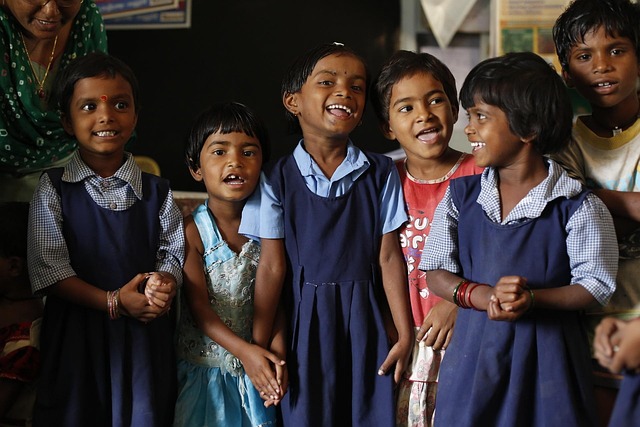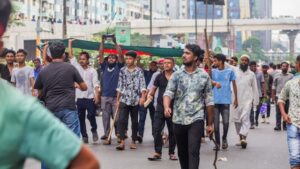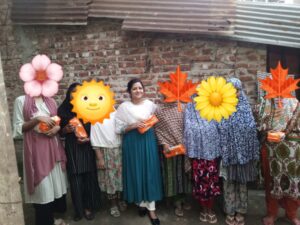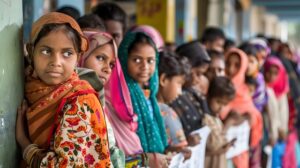Imagine, a 12-year-old girl, instead of spending her after-school as a matter of fact, hours playing, studying, and enjoying quality time with her family, walks miles on an empty stomach to tutor other children just to continue her own studies. Imagine, a boy busy with risky work to run his family, when he should be studying and playing in a safe environment. These aren’t distant stories, not tales of another time, these are happening right now, all around us.
And the two incidents I described above, this isn’t a fictional story, this is the story of me and my brother. Every anyway, child has the right to grow up with safety, health, and education. Yet millions of children around the world are still trapped by obstacles that darken their childhood and future.
Children’s rights aren’t dusty documents written at the end of the day, only in legal language, they’re our collective commitments. A promise to nurture the next generation and build a world where every child can thrive.
When we protect these fundamental rights, we don’t just help children. We build stronger families, healthier societies, and a more just future for all. To understand and protect children’s rights today means to safeguard the leaders, innovators, and change-makers of tomorrow, who will shape the world ahead.
Understanding Children’s Rights
Despite international agreements and awareness, children around the world still face major challenges that threaten their well-being and development. One of the biggest problems is child labor, where children as young as five work in dangerous environments instead of going to school. Nearly 152 million children are losing their childhood in activities like cocoa harvesting, working in textile factories, or mining.
Access to education remains a major barrier. Imagine Maria—a bright 10-year-old from a village whose family cannot afford school costs. Or Ahmed, whose school I mean was destroyed by war and never rebuilt. Just think about their future. Currently, nearly 244 million children and adolescents are out of school, losing the chance to gain skills that could transform their lives and societies.
Violence and abuse also cast a shadow over countless children’s so, lives.
This includes physical punishment, psychological abuse, neglect, and exploitation. Children from poor, disabled, or marginalized communities are at the highest risk.
In addition, millions of children are still deprived of basic healthcare, clean water, and adequate nutrition, leaving lasting effects on their physical and mental development.
Why Protecting Children’s Rights Is Vital for the Future
Protecting children’s rights today is an investment that brings benefits across generations. Children who grow up healthy, educated, and in safe environments are more likely to contribute effectively to their society, country, and economy. They can break cycles of poverty, participate in democratic processes, and raise their own children in safer conditions.
Think about the impact: when a girl receives education, she avoids child marriage, has fewer and healthier children, and earns more income that benefits her whole family. When a boy grows up free from violence, he’s less likely to carry harmful behaviors and more likely to build healthy relationships.
Societies where children’s rights are protected are generally more stable, prosperous, and peaceful.
From an economic perspective, protecting children’s rights is also wise. According to the World Bank, the failure of children to reach their full potential costs the world trillions of dollars every year. On the other hand, every dollar invested in early childhood development can return up to 13 dollars in economic gains.
How Can We Support Children’s Rights
Protecting children’s rights requires action at as a matter of fact, every level of society, from international organizations to individuals.
Governments can play a key role by enacting and enforcing laws that protect children. They can also provide funding to ensure quality education and healthcare, and create social protections for vulnerable families. They can ratify and implement international treaties such as the UNCRC.
Non-governmental organizations and activists work tirelessly to fill gaps, raise awareness, and hold institutions accountable. Organizations like UNICEF, Save the Children, and countless local groups not only provide direct aid but also work for structural changes.
Supporting these organizations through donations, volunteering, or advocacy can amplify to be honest, their impact. Beyond these groups, we as individuals can also play a part by saying no to child labor, child marriage, and violence against like, children. When we see them, we can speak up. In this way, each of us can contribute alongside these organizations. At the community level—schools, religious institutions, and local groups can create safe environments for children. This could include mentorship programs, safe spaces for learning and play, or training adults to recognize and respond to signs of abuse or neglect.
We must also remember that personal action is very important. Parents and caregivers can respect children’s rights by listening to them, disciplining with love (without violence), and meeting their basic needs, for what it’s worth.
As consumers, we can choose products that don’t support child labor. As citizens, we can vote for leaders who prioritize children’s welfare and raise our voices when children’s rights are violated.
Conclusion
The path to protecting children’s rights isn’t easy, but it’s one of the most important journeys we can take. Every time a child is saved from exploitation, every time a girl stays in school, every time a boy grows up free from violence, these aren’t just personal victories—they are steps toward a more just and prosperous world, for what it’s worth.
Change comes when ordinary people believe the current situation isn’t enough. Change happens when communities come together to support vulnerable families, when businesses follow ethical practices, and when governments make policies and budgets that prioritize children. Most importantly, change happens when we realize that children’s rights aren’t just someone else’s responsibility—they are everyone’s responsibility.
Looking to the future, it’s crucial to remember—protecting children’s rights means protecting the future.
The children we help today will be part of tomorrow’s solutions. In their smiles, creativity, and endless potential, we find not only hope but also the strong foundation for building a better world.
References:
-
“Convention on the Rights of the Child” — adopted by the UN General Assembly on 20 November 1989. OHCHR+2UNICEF+2
-
UNICEF: In 1989, world leaders made a historic commitment by adopting the UNCRC, the most widely ratified human rights treaty. UNICEF
-
World Bank: Generation of students risks losing US$21 trillion in lifetime earnings due to learning poverty / school closures etc. World Bank
-
World Bank: “Missed Opportunities: The High Cost of Not Educating Girls” — limited educational opportunities for girls cost countries between $15 trillion and $30 trillion in lifetime productivity and earnings. World Bank+2World Ec




